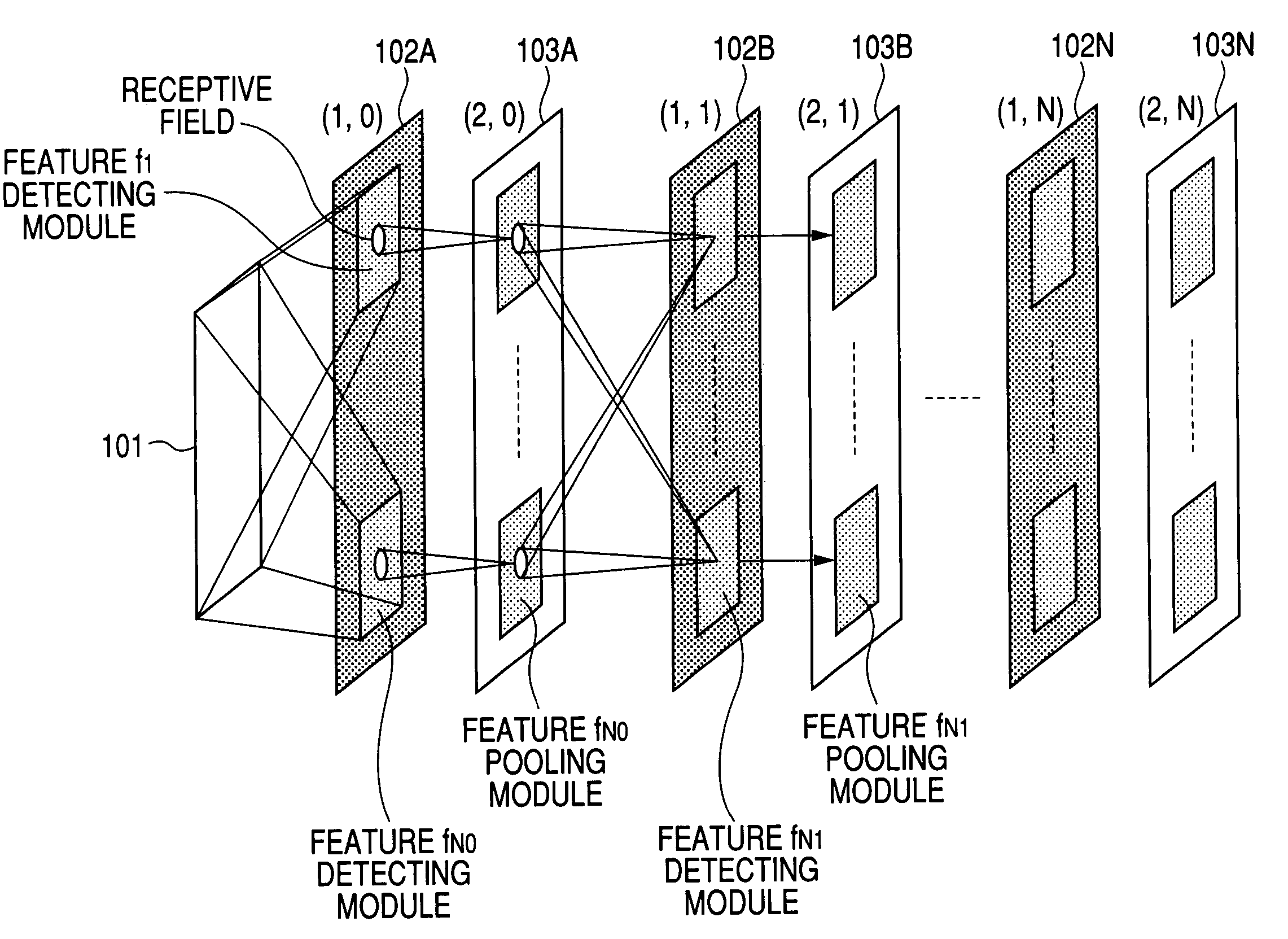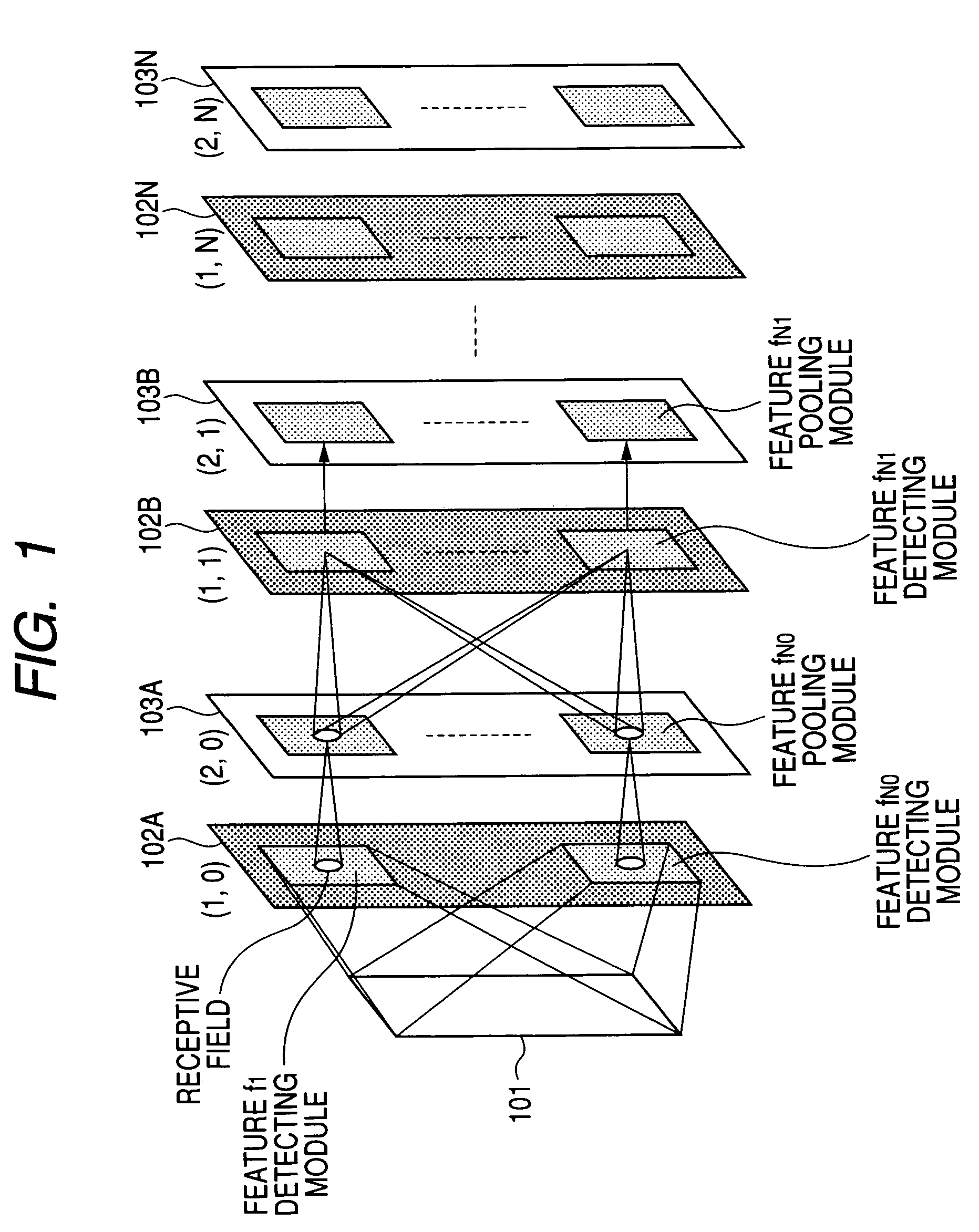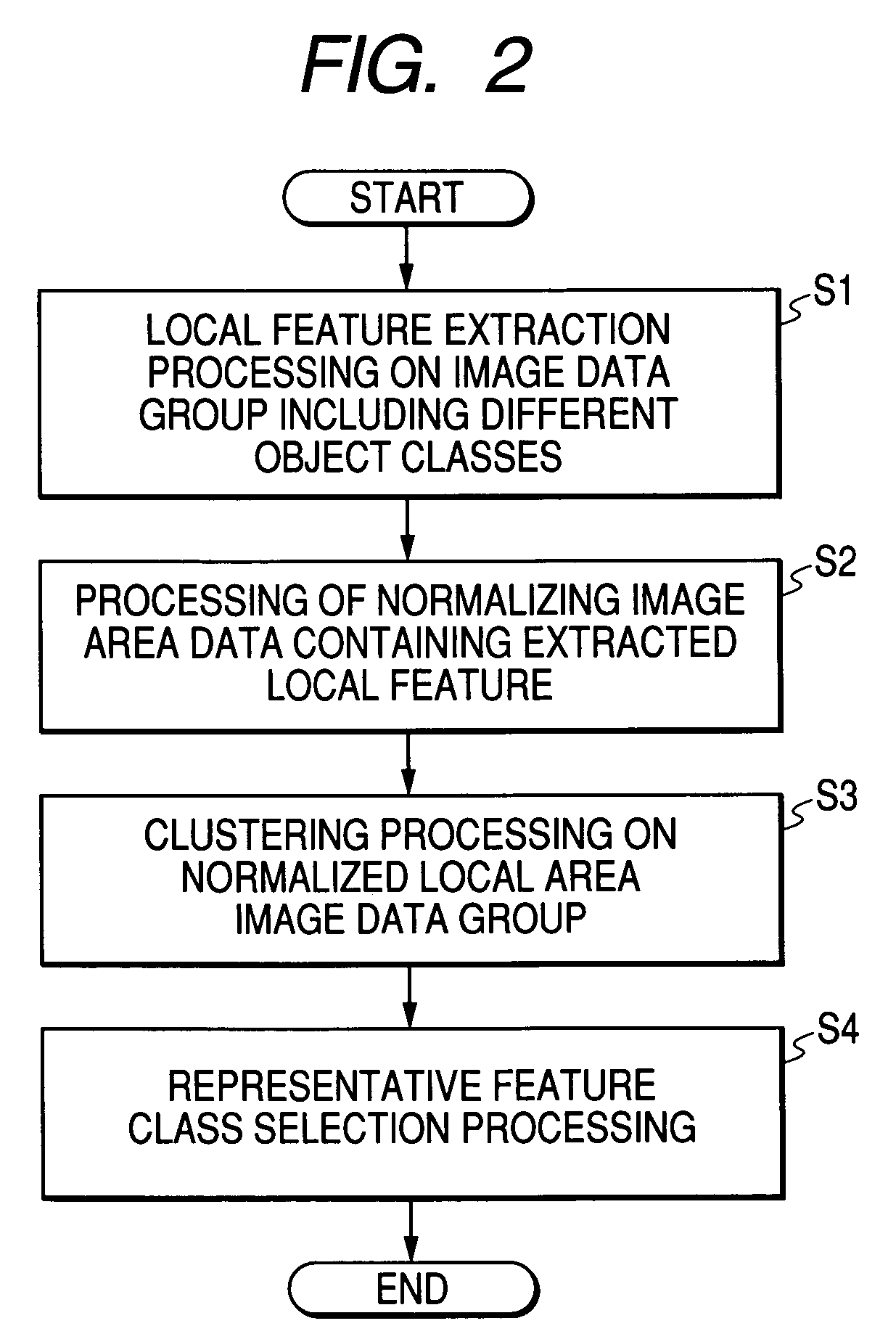Learning method and device for pattern recognition
a learning method and pattern recognition technology, applied in the field of learning methods and devices for pattern recognition, can solve the problems of “low-dimensional procedure” and none of the recognition algorithms according to sirovich et al., and achieve the effect of efficient detection and recognition
- Summary
- Abstract
- Description
- Claims
- Application Information
AI Technical Summary
Benefits of technology
Problems solved by technology
Method used
Image
Examples
first embodiment
[0043]A detailed description is given below with reference to the drawings on a first embodiment of the present invention.
(Outline of Overall Configuration)
[0044]FIG. 1 is a diagram schematically showing an example of the overall configuration of a parallel hierarchical processing network for pattern detection and recognition. The parallel hierarchical processing network is a major component of a pattern recognition device, which incorporates a learning device for pattern recognition used in this embodiment. This pattern recognition device mainly processes information pertaining to recognition (detection) of an object or a geometric feature.
[0045]FIG. 11 is a block diagram showing an example of the configuration of the pattern recognition device used in this embodiment.
[0046]The pattern recognition device in FIG. 11 contains as its critical parts an image input unit 111, an image recognizing unit 112, a learning control unit 113, a local feature detecting unit 1120, a clustering uni...
second embodiment
[0089]A second embodiment of the present invention is described next. In the second embodiment, detailed descriptions on portions identical to those in the first embodiment will be omitted.
[0090]Reference is made to a flow chart of FIG. 5, which shows an example of a learning procedure according to this embodiment.
[0091]Here, neurons on the second hierarchical level and lower of the same convolutional neural network (CNN) that is employed in the first embodiment are trained in the same manner as the first embodiment with the use of image data of objects of different categories (images of people's faces and of vehicles, for example) (Steps S51 to S53).
[0092]Thereafter, connections (receptive-field architectures) on the trained second hierarchical level and lower are fixed (Step S54). In automatic learning of connections of neurons in the feature detecting layers above the second hierarchical level, image data (in the case of vehicles, containing such data as a maker name and color) b...
third embodiment
[0094]A third embodiment of the present invention is described next. In the third embodiment, detailed descriptions on portions identical to those in the first and second embodiments will be omitted.
[0095]Shown in this embodiment are a method of and a device configuration for automatically extracting useful intermediate local features which constitute a subject to be recognized and which are more intricate features obtained by combining selected local features.
[0096]Plural features are chosen from the aggregation of local features detected by the lowermost or second hierarchical level modules, which are created by training a convolutional neural network (CNN) according to the first and second embodiments, in other words, from the graphic alphabet. A given local spatial arrangement of the chosen features provides an aggregation of intermediate level graphic patterns (a sort of vocabulary in pattern recognition), which is considered as effective as the graphic alphabet in detection / re...
PUM
 Login to View More
Login to View More Abstract
Description
Claims
Application Information
 Login to View More
Login to View More - R&D
- Intellectual Property
- Life Sciences
- Materials
- Tech Scout
- Unparalleled Data Quality
- Higher Quality Content
- 60% Fewer Hallucinations
Browse by: Latest US Patents, China's latest patents, Technical Efficacy Thesaurus, Application Domain, Technology Topic, Popular Technical Reports.
© 2025 PatSnap. All rights reserved.Legal|Privacy policy|Modern Slavery Act Transparency Statement|Sitemap|About US| Contact US: help@patsnap.com



